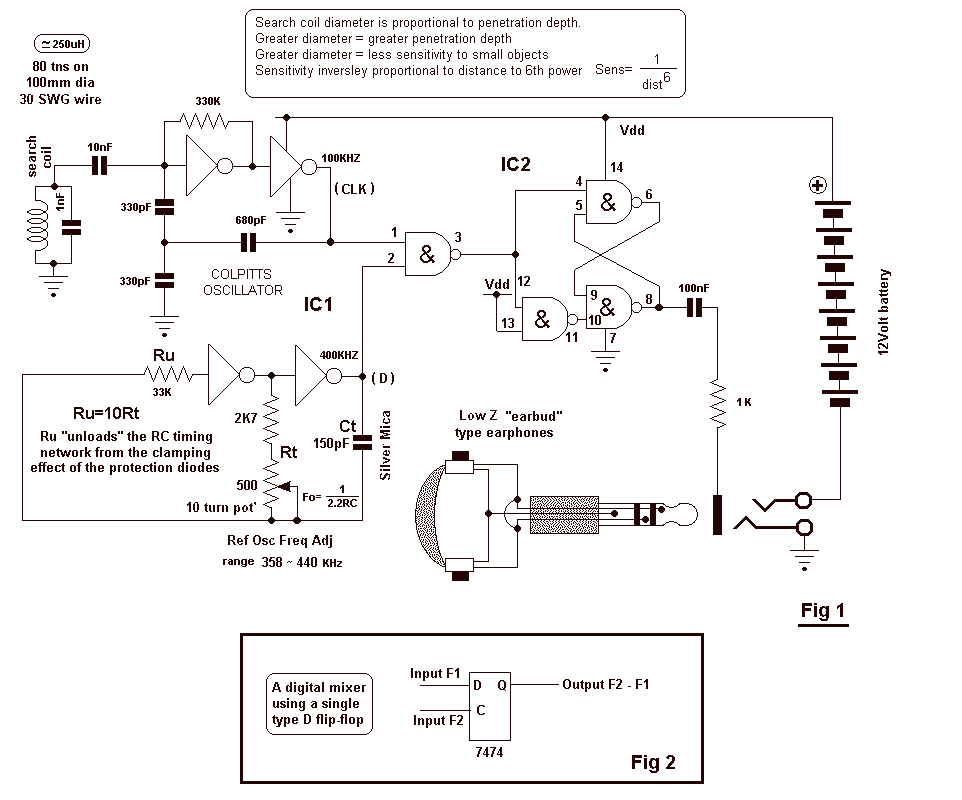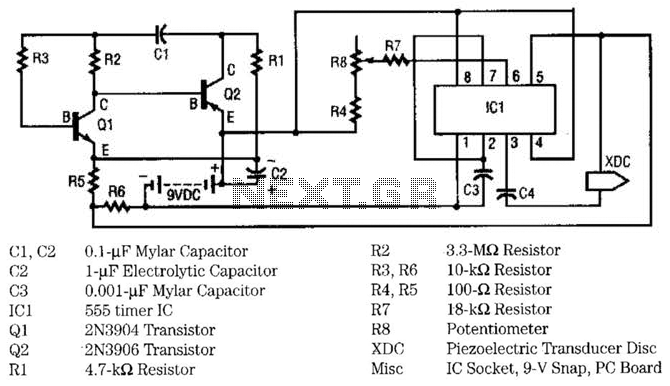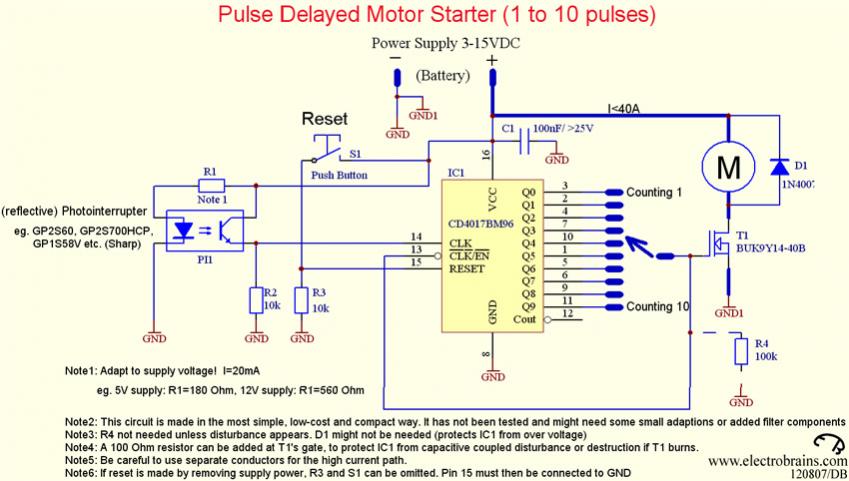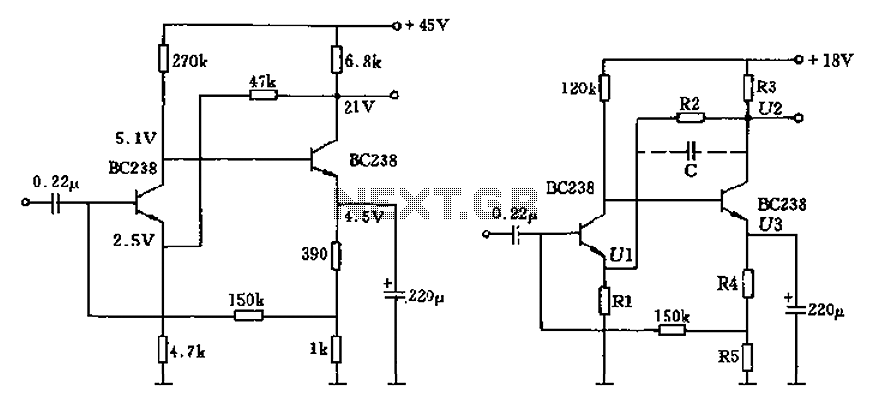
Mini Stereo Amplifier Circuit
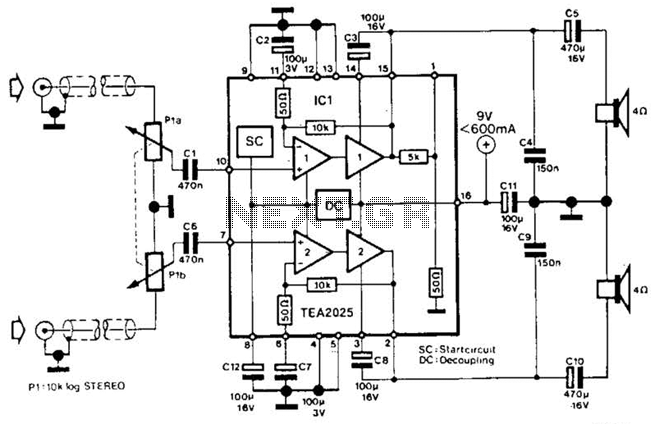
Using a Thomson TEA2025, this stereo amplifier delivers 1 W per channel into a 4-ohm load with a 9-V supply. The input sensitivity is 25 mV peak-to-peak for full output. It is important to ensure that pins 4, 5, 12, and 13 of the TEA2025 are effectively grounded to a ground plane and adequately heatsinked.
The Thomson TEA2025 is a compact, integrated circuit designed for use in low-power audio amplification applications. This amplifier is capable of providing a power output of 1 W per channel, making it suitable for driving small speakers in various consumer electronics. With an operating voltage of 9 V, the TEA2025 is efficient and can be used in battery-powered devices.
The input sensitivity of 25 mV peak-to-peak indicates that a relatively low input signal is sufficient to achieve maximum output power, which is advantageous for applications where signal levels may vary. The design of the amplifier should include proper grounding practices to minimize noise and interference. Specifically, pins 4, 5, 12, and 13 must be connected to a ground plane to ensure stability and performance. This grounding not only provides a reference point for the amplifier but also helps in heat dissipation, which is crucial for maintaining the operational integrity of the device.
In addition to grounding, adequate heatsinking is necessary for the TEA2025 to prevent thermal overload. The power dissipation in the amplifier can lead to increased temperatures, potentially affecting performance and reliability. Therefore, a heatsink should be attached to the appropriate pins to facilitate efficient heat transfer away from the chip.
Overall, the TEA2025 stereo amplifier represents a robust solution for applications requiring compact, efficient audio amplification, provided that proper design considerations are implemented regarding grounding and thermal management. Using a Thomson TEA2025, this stereo amplifier provides 1 W per charuiel into 4 with a 9-V supply. Input sensitivity is 25 mV p-p for full output. Note that pins 4, 5, 12, and 13 of TCI should be effectively grounded to a ground plane and heatsinked. 🔗 External reference
The Thomson TEA2025 is a compact, integrated circuit designed for use in low-power audio amplification applications. This amplifier is capable of providing a power output of 1 W per channel, making it suitable for driving small speakers in various consumer electronics. With an operating voltage of 9 V, the TEA2025 is efficient and can be used in battery-powered devices.
The input sensitivity of 25 mV peak-to-peak indicates that a relatively low input signal is sufficient to achieve maximum output power, which is advantageous for applications where signal levels may vary. The design of the amplifier should include proper grounding practices to minimize noise and interference. Specifically, pins 4, 5, 12, and 13 must be connected to a ground plane to ensure stability and performance. This grounding not only provides a reference point for the amplifier but also helps in heat dissipation, which is crucial for maintaining the operational integrity of the device.
In addition to grounding, adequate heatsinking is necessary for the TEA2025 to prevent thermal overload. The power dissipation in the amplifier can lead to increased temperatures, potentially affecting performance and reliability. Therefore, a heatsink should be attached to the appropriate pins to facilitate efficient heat transfer away from the chip.
Overall, the TEA2025 stereo amplifier represents a robust solution for applications requiring compact, efficient audio amplification, provided that proper design considerations are implemented regarding grounding and thermal management. Using a Thomson TEA2025, this stereo amplifier provides 1 W per charuiel into 4 with a 9-V supply. Input sensitivity is 25 mV p-p for full output. Note that pins 4, 5, 12, and 13 of TCI should be effectively grounded to a ground plane and heatsinked. 🔗 External reference
